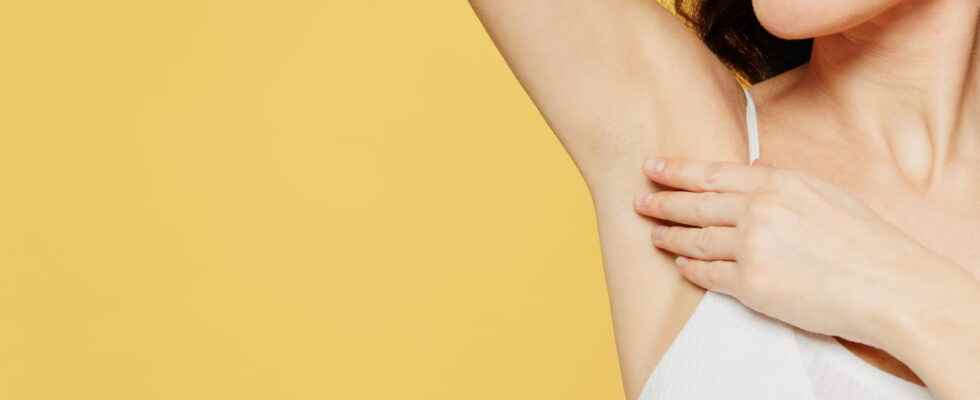Fungal infections under the armpits are very rare and can be caused by several fungi. They can also be the consequence of a pathology. Early management by a dermatologist will allow the implementation of an appropriate treatment.
What is a yeast infection under the armpits?
Fungal infections are skin infections caused by the presence of a fungus. All parts of the body including the scalp, nails and hair can be affected by yeast infection. Localization in the armpits is far from common. In general, lesions in the armpits have a typical clinical appearance: uni- or bilateral erythematous lesions, most often itchy and well limited. “In some cases, the clinical appearance may be altered due to humidity and maceration in this area. Lichenification can sometimes appear later, especially in the itchy and scratchy lesions“, emphasizes Dr Françoise Foulet, dermatologist.
What are the causes of a yeast infection under the armpits?
Mycosis under the armpits can be due to the presence of yeast-like fungi of the genus Candida (Candida albicans) or filamentous fungi of the dermatophyte type. Three types of dermatophytes can be observed:
► Epidermophyton flocosum is responsible for attacking large folds, but is seldom isolated in culture;
► Trichophyton rubrum can also affect this area but it is generally the reflection of an extension of other lesions, particularly in the feet (athlete’s foot, for example). “Indeed, in the absence of antifungal treatment or in the event of incorrect diagnosis with the application of topical corticosteroids, the lesions extend and profuse dermatophytia develops.“, she adds;
► Trichophyton indotineae is a newly described dermatophyte that particularly affects the folds and the lumbar girdle. “Initially observed in India, it is developing and emerging in Europe“. The peculiarity of this dermatophyte is its resistance to antifungal treatments and in particular to terbinafine.
On examination of the armpit, we observe, in the case of candidiasis, a very erythematous bottom of the fold, with a whitish coating and some cracks. “In general, around the armpit there are small very evocative pustules of Candida who will confirm the diagnosisc”, notes Dr. Foulet. In case of dermatophytia, the lesions are annular and are well limited.
Who to consult in case of mycosis in the armpits?
General practitioners, dermatologists and mycologists can take care of this pathology. There are many differential diagnoses: atopic eczema, allergic eczema skin folds psoriasis… It is important not to waste time and to consult very quickly in case of symptoms. In the event of involvement of other associated sites or of an atypical appearance, it is advisable to prescribe a mycological sample to ascertain the diagnosis. “A special case: if T. indotineae is suspected, a dermatologist should be consulted“, she adds.
What is the treatment for a yeast infection under the armpits?
Treatment is mainly based on the application of a local antifungalwhatever the molecule, for a period ofa month. In case of parallel infection of other areas of the body, they will also have to be treated. On a daily basis, he advises patients with mycosis use creams rather than lotions which may contain alcohol and have an irritating effect. “Do not use powder in the folds either because with humidity, agglomerates form and can be a source of irritation and above all reduce the effectiveness of the treatment.“, concludes Dr. Foulet.
Thanks to Dr Françoise Foulet, Mycology-parasitology Unit, Department of Prevention, Diagnosis, Treatment of Infections, Henri-Mondor University Hospitals (AP-HP), Créteil.
